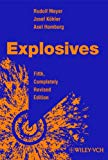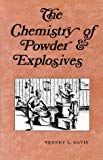Gunpowder is the oldest of all known explosives. Gunppowder was used by the ancient Chinese, Arabs, and people of India first. Exact directions on how to make it were not known to the western World until 1242, when Roger Bacon of Oxford University published a book in which he explained the methods of making gunpowder. Today gunpowder is not used as much as more modern and powerful explosives.
After Roger Bacon published his formula for gunpowder, Berthold Schwarz, a German monk, developed it as a practical explosive in the thirteen hundreds. Schwarz is said to have invented a firearm which exploded shells by the action of gunpowder. Gunpowder was being used in cannons as early as 1346. At that time, gunpowder was actually used in powder form. It had to be loaded carefully into the cannon, so that the charge would be packed properly. If it were packed too tightly, the flame would not light the powder because it couldn’t get enough oxygen. But if it were packed too loosely, it couldn’t build up enough gas forces to push the cannonball to it’s target. A new way to make gunpowder into grains, instead of powder, was invented in the fifteenth century. In this method you would moisten the gunpowder and pound it into a cake. The cake was then broken into small bits and put into a sieve to be sifted. The pieces that came through the sieve were different shapes and would not fit together well enough to pack tightly, so that careful packing of a cannon was not necessary.
When cannon with long rifled barrels came into use, it became necessary to slow down the burning rate of the gunpowder. Its swift explosive force would often burst the barrel of the gun, causing the man who fired it to be in almost as much danger as the man he was attempting to shoot. Captain Rodman of the US Army developed a gunpowder that was made into grains shaped into hexagonal prisms. These prisms were large and had several rounded parallel grooves in them. When the prisms were placed end to end, these grooves fitted to make a continuous channel. The flame burned outward from these grooves and inward from the surface of the prisms. This kept up a continuous flow of gases for long periods, and caused a long, slow push on the shell. As a result, this kind of explosions could hurl the shell long distance.
Smokeless powder was invented in 1884, and replaced gunpowder for use in firing shells by the early 20th century. But gunpowder was still made in large quantities in the United States for many years after that. During the First World War, gunpowder was used as a base in many shells, bombs, and torpedoes.
For many centuries gunpowder was mainly used in firearms. But it has the disadvantage of producing clouds of black smoke when it ignites. Most gunpowder today is used in certain types of safety fuses, in fireworks, and as an igniter for rockets. It is also sometimes used in industrial blasting where powerful explosives are not required. When gunpowder is used as a blasting powder, it contains less saltpeter and more sulfur and charcoal.
Modern gunpowder (usually called black powder) is a mixture of sulfur, saltpeter (potassium nitrate), and charcoal. Saltpeter usually makes up 75 percent of the mixture, sulfur makes up 10 percent, and charcoal makes up the remaining 15 percent.
The most common use of gunpowder today, other than in firearms and explosives, is in fireworks. Fireworks are combinations of gunpowder and other ingredients that explode with loud noises and colorful sparks and flames when they burn. Fireworks are also called pyrotechnics. Fireworks that only make a loud bang are called firecrackers. Fireworks are dangerous because they contain gunpowder they should be handled only by adults or with adult supervision. Fireworks handled improperly can explode and cause serious injury to the people within range of the explosion.
Most fireworks are made by packing gunpowder and other chemicals into cardboard tubes. Coarse gunpowder is used shoot rockets into the air. Finer and more loosely packed gunpowder explodes to destroy the rocket once it is in the air. Manufactures add small amounts of special chemicals to the gunpowder to create colors. They add sodium compounds to make yellows, strontium compounds to make red, and copper and barium compounds for blue and green. Charcoal is another substance that can be added. It provides the rocket with a sparkling flaming tail.
The History of Gunpowder,


